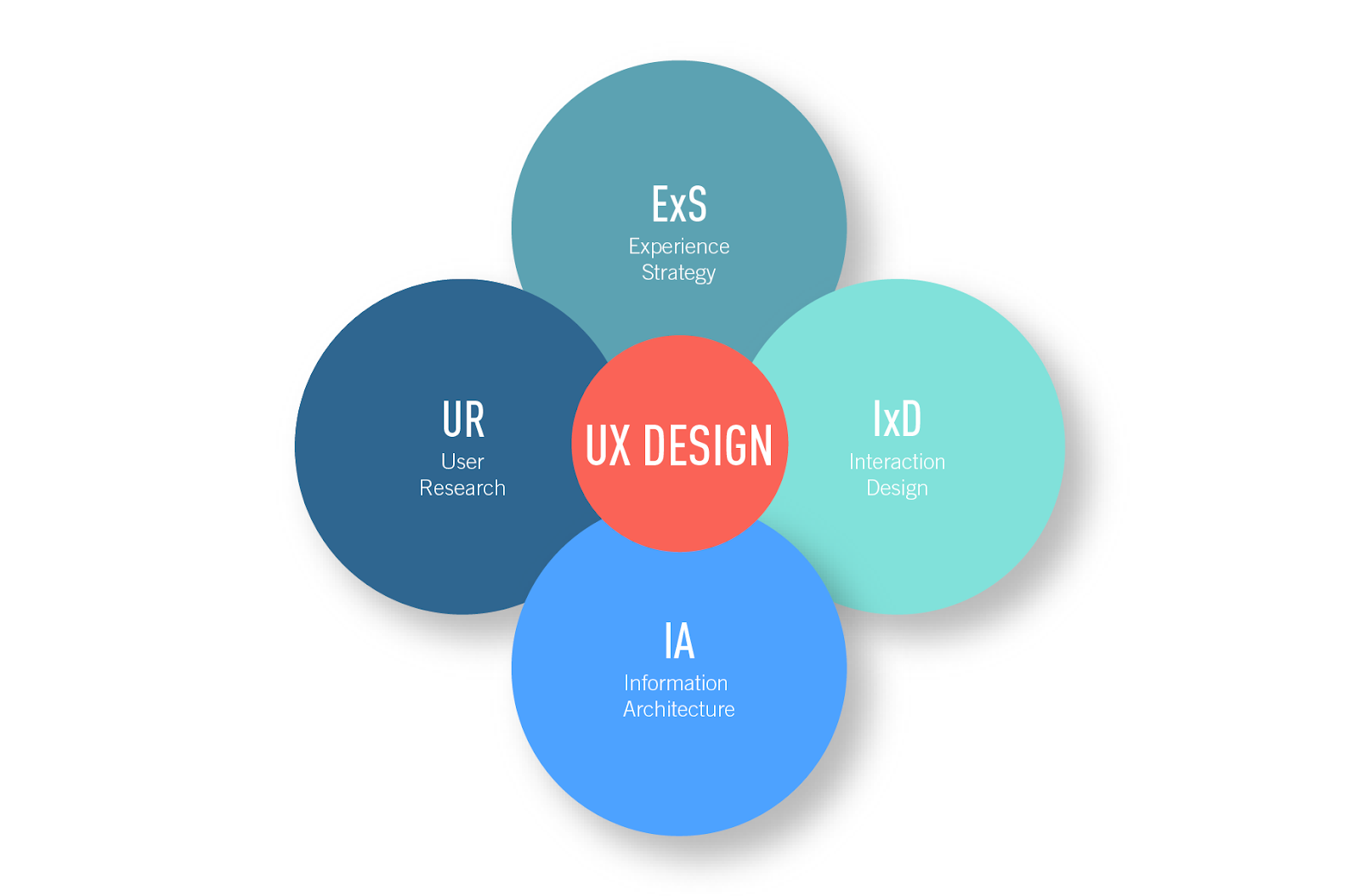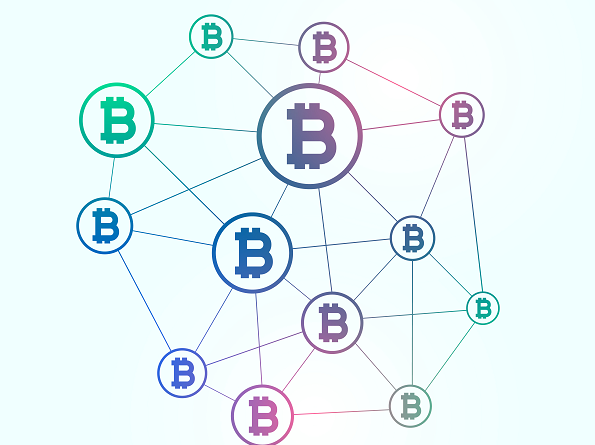What is UX Design?
Contents
1. What is UX design
2. The history of UX design
3. Difference between UX and UI
4. 7 factors that influence design experience
5. The 4 disciplines
Technology has been rapidly evolving since its inception, it’s evolving faster than we can handle, our parents and grandparents are proof of this. We’re all asked to fix some “problem” they have with uploading photos to Facebook, downloading apps, or even simple things like attaching something to an email. The reason technology has been growing so much is because the people who design it always strive to improve their understanding of its users. However, the idea of understanding user needs and requirements didn’t always exist. Archaic business models only considered the business perspective when creating and designing products. They only focused on what they wanted to design rather than thinking about what would make the users experience better. This is where User Experience (UX) and User Interface (UI) design come in. UI/UX design has taken off as popular career paths for fresh architecture, engineering, and marketing grads amongst many others. Let’s delve in and learn about UX design.
What is UX design?
The image below perfectly encapsulates what user experience looks like.

It’s important to remember that the experience already exists for the user, UX designers aren’t designing what the users’ experience should be. The purpose of a UX designer is to improve and make the existing experience better. Take the example below, the experience of eating cereal already exists. UX designers will research and design how to make the overall experience of eating the bowl of cereal better. This includes everything from how crunchy the cereal is, what flavour it is, the design of the spoon, the design of the bowl, etc.
UX is about any interaction a user has with any product or service. UX design is the process designers go through to create a substantial product for its users. UX designers consider all elements of the design experience which includes how it makes the users feel, how easy it is for the user to navigate, and what about it is desirable to the user. This could range from how tangible a product feels to how easy it is to log out of an account to how simple the checkout process is on an e-commerce site. The end goal of UX design is to create efficient, meaningful, and easy experiences for the user. UX designers achieve this goal by combining product development, market research, strategy, design, and branding to build smooth and coherent user experiences for various products and services.
The history of UX design
While the term “UX design” is common terminology now, the idea of user experience design has existed for thousands of years now. The concept of user experience design can be traced back to 4000 BC to the famous Chinese philosophy of Feng Shui, which is all about organising your surroundings in the most coordinated and optimal way. In other terms, the most user-friendly way! Research also suggests that ancient Greek civilizations as far back as the 5th century BC designed their tools and work environments based on ergonomic principles. Fast-forward a few hundred years to the 19th century Industrial Revolution and you will see iconic industrialists and thinkers like Henry Ford and Frederick Winslow Taylor integrate basic experience design principles into their various production processes. Much like how modern-day UX designers research how users interact with products and services, Taylor investigated the interactions between workers and their tools.
While earlier it may have primarily focused on tools and living spaces, it has now evolved into something much bigger thanks to modern technology. The term UX design is now synonymous with digital-related products and services such as websites, software, apps, and the newest gadgets.
Difference between UX and UI
The terms UI and UX design are often used interchangeably, which is incorrect. UX and UI design are two different things completely. The image below helps us understand the difference between the two:

UI consists of the visual elements that allow someone to interact with a product or service such as colour schemes, layouts, graphics, and any visual design element. However, UX is what the user takes away from their entire overall experience with the product.
Ken Norton, a Partner at Google Ventures and ex-product manager explains not only the difference between UI and UX but also how they complement each other through this simple analogy:
“Start with a problem we’d like to solve. UX design is focused on anything that affects the user’s journey to solve that problem, positive or negative, both on-screen and off. UI design is focused on how the product’s surfaces look and function. The user interface is only a piece of that journey. I like the restaurant analogy I’ve heard others use: UI is the table, chair, plate, glass, and utensils. UX is everything from the food, to the service, parking, lighting and music.”
UI is all about the interface of the product. It’s elements like the buttons users click on apps or websites and the visual design of the screens, landing pages etc, that a user navigates through on an app. Graphic designers often opt to work as UI designers as there’s a lot of crossover between their lines of work. They both cover elements like colour palettes, typography, and animations.
Now that we know a little bit about what UX design is, its history, and you’re aware that you are in fact interested in UX design and not UI design, let’s get into the nitty-gritty of it.
7 factors that influence design experience
User Experience is extremely critical and can result in the direct success or failure of a product in the market. UX is often confused with ‘usability’, which is only about how easy a product is to use. While usability is indeed a core aspect of UX, it’s important to understand that UX is so much more than just usability. UX is multi-faceted and budding designers need to pay attention to a range of elements in order to deliver a successful product.
Peter Morville is a visionary in the UX design world, he advises Fortune 500 companies about their UX. Morville’s work states that there are seven essential elements that encompass and characterize UX design:usable, useful, credible, findable, desirable, valuable, accessible
Let’s explore each factor and how it ties into UX design.
Usable:
Usability is all about the end objective of a product or service, it enables users to efficiently and adequately achieve their end objective. Take a video game controller as an example, if a controller had three sets of buttons and analogues instead of two, it would most likely be unusable as most people are equipped with only two hands. We may evolve to have three hands but that’s a topic for another time.
Products can still succeed if they are usable but that is quite unlikely. Poor or flawed usability is correlated with early and rudimentary versions of products. Just look at cell phones. The look and feel of phones have completely changed, smartphones now don’t have keypads anymore. Can you imagine still having to use a phone with a keypad where you would have to press a key three times just to get the letter you want while texting? It would drive me insane! While phones with keypads are certainly still in circulation, they are no longer the norm. They have been phased out due to their lack of usability.

Useful:

Unlike this peculiar cuboid-shaped rolling pin, your product has to be useful. There’s no point in attempting to introduce a useless product to the market. If the product lacks purpose, it won’t be able to compete. However, it is important to note that the term “useful” is relative, it’s an eye of the beholder type of situation. Products may be deemed useful even as they could deliver non-practical benefits such as aesthetic appeal. For example, take a look at this designer brick:

Yes, it is a real product that people actually pay money for. Hugely popular streetwear fashion brand Supreme designed this brick. Supreme’s customer base is quite cult-like and this brick sold out. Its resale value is now $750. You read that right, people are trying to sell this brick for 56,000 rupees.
Massively successful products like computer games are also considered useful even though they aren’t seen as useful to everyone.
Credible
American politician Randall Terry once said “Fool me once, shame on you. Fool me twice, shame on me.” However, modern-day users seldom give out second chances. With so many options, users will flock to competitor products if they aren’t happy with a product’s user experience. One bad experience using Flipkart could potentially push someone to use Amazon.
Credibility associates the ability of the user to trust the product a company has provided. The product has to do the job it’s meant to do, last for a substantial amount of time, and have an accurate description.
It becomes a bleak possibility to deliver a user experience if the user assumes the product or service creator is lying and has bad intentions. The most recent example of this is the recent growing distrust of social media platform Tik Tok.
Findable
The product must be easy to find, both literally and digitally. In digital and information products, the content must be easy to find. If you can’t find a product, you’re unlikely to purchase it and this goes for all users of the product. If you log into an e-commerce site and there are no categories for any of the products like mobiles, health, watches, etc., it would take a longer amount of time to find a product and make a purchase decision. It would be incredibly frustrating.
Desirable
Maruti and Mercedez both make cars. They’re both very popular car brands. To a certain degree, they are both useful, usable, findable, credible, accessible, and valuable ,but Mercedez is way more desirable than Maruti. Mercedes is more desirable because of its chic look, engine capacity, premium features, and because it’s a status symbol. However, Maruti is in no way an undesirable car; they have sold millions of units. However, if someone offers you the choice between a free Maruti or Mercedez, most will go for the Mercedez. Those who would accept the free Maruti instead of the Mercedez need to reevaluate their life choices.
Desirability is expressed in design through elements such as branding, image, identity, aesthetics, and emotional design. The more desirable a product the more likely the user is going to brag about it, therefore creating desire in other users. People are more likely to flex the newest iPhone than the newest Micromax.
Accessible
Unfortunately, accessibility is often neglected when creating user experiences. Accessibility is all about providing a product that can be accessed by users of a range of abilities, this entails the segment of our population who are disabled to a certain extent including conditions such as hearing loss, visually impaired, motion, or learning impaired amongst others.
Design with accessibility in consideration is often shunned by companies as it’s deemed as a waste of money because people with disabilities make up a smaller portion of the population. While the number of disabled persons is hard to track down in India due to its sheer population size, roughly 19% of the US population has some sort of disability. That’s a lot of neglected potential customers!
It’s worth mentioning that if a product is designed for accessibility, the product will be easier for everyone to use, not just those with disabilities. For example, a dictation or speech-to-text feature on Microsoft Word won’t just help the visually or physically impaired, it would be convenient for everyone.
However, the tides are turning as places like the EU fine companies for not taking accessibility into account. Unfortunately, we still have a long way to go.
Valuable
Lastly, the product must deliver value. It must be valuable to both the business that creates it and the customer that uses it. No value simply means no success; the product will gradually be undermined. Designers need to remember that value is one of the key influences on purchasing decisions. A 10,000 rupee product that solves a 100,000 rupee problem is more likely to succeed than a 100,000 rupee product that solves a 10,000 rupee problem.
The 4 disciplines
UX is a blanket term that can be divided up into four main disciplines known as the quadrant model:
– Experience Strategy (ExS)
– Interaction Design (IxD)
– User Research (UR)
– Information Architecture (IA)

Experience Strategy (ExS)
While UX design is extremely user-focused, it is not solely about the user. It also brings tremendous value to the business providing the product or service. Experience strategy is about crafting a comprehensive business strategy which incorporates the customers and the company’s needs.
Interaction Design (IxD)
As its name suggests, IxD explores how users interact with a system, taking into account all interactive elements such as buttons, page transitions, and animations. Interaction designers strive to create intuitive designs that allow users to effortlessly and easily complete tasks.
User Research (UR)
UR is a critical part of UX; it’s about identifying a problem and designing the solution. The designs are made or tweaked based on research and feedback from existing or potential customers. Using an almost scientific approach, UX designers will launch surveys, conduct interviews and usability tests, and create user personas to further understand the end-users needs and objectives. The designers gather both qualitative (non-numerical) and quantitative (numerical) data to make smarter decisions.
Information Architecture (IA)
IA is the process of organizing information and content in a meaningful and accessible way. This is imperative in assisting the user to navigate their way through a product. To establish the IA of any product, information architects consider the relationship between different sets of content. They also give thought to the language used and ensure it is convincing and consistent.
These are the four major areas of UX design. However, there is a whole swarm of sub-disciplines. UX is so much more than just sketching and wireframing. It’s a multidisciplinary and multifaceted field influenced by psychology, communication design, usability engineering, computer science, cognitive psychology, and more.
UX design is a growing industry and it honestly seems limitless. Hopefully, after reading through this article, you’ve realized that UX design is something you would like to have a crack at!
If you’re not sold yet, please read this second article. We have had a look at various elements of UX design, now let’s delve into the day-by-day work of a UX designer.
Breaking into this competitive market is incredibly difficult, everyone needs to start somewhere so check out Internshala’s UX Design online course, UX internships, and UX entry-level jobs.



